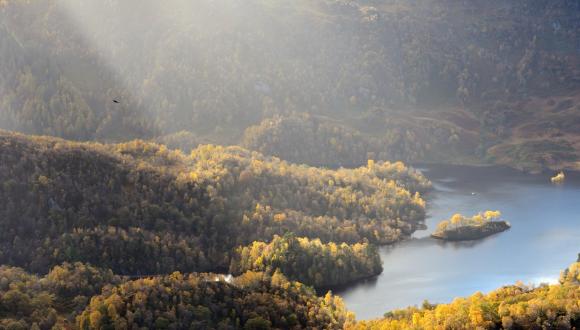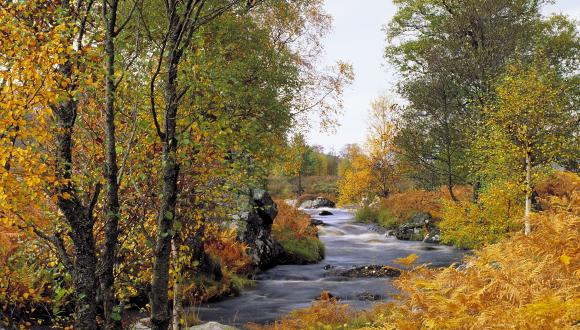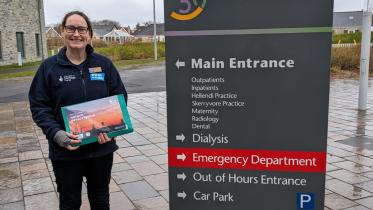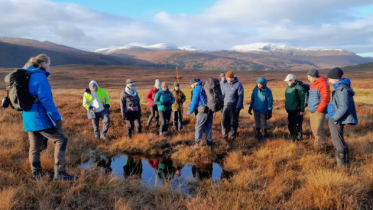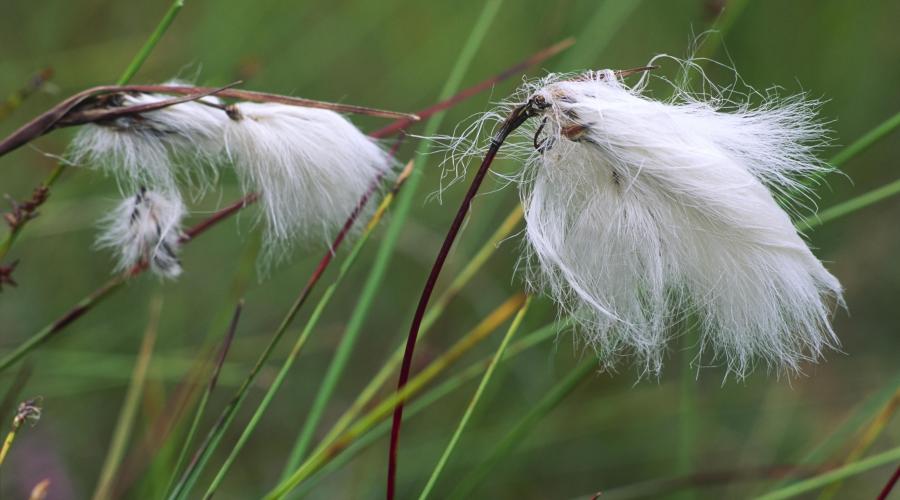
Nature Networks - Glossary
Find key terms included across the Nature Network Toolbox here.
30 by 30
Target 3 in the Global Biodiversity Framework “Ensure and enable that by 2030 at least 30 per cent of terrestrial, inland water, and of coastal and marine areas, especially areas of particular importance for biodiversity and ecosystem functions and services, are effectively conserved and managed through ecologically representative, well-connected and equitably governed systems of protected areas and other effective area-based conservation measures, recognizing indigenous and traditional territories, where applicable, and integrated into wider landscapes, seascapes and the ocean, while ensuring that any sustainable use, where appropriate in such areas, is fully consistent with conservation outcomes, recognizing and respecting the rights of indigenous peoples and local communities, including over their traditional territories”. For Scotland 30 by 30 sites are made up of Protected Areas and Other Effective Area-based Conservation Measures.
In Scotland 30 by 30 sites are made up of existing Protected Areas that are European sites (Special Conservation Areas and Special Protection Areas), Ramsar sites, SSSIs and National Nature Reserves. Over time, as Scotland moves closer to achieving at least 30% of land and sea safeguarded for biodiversity this will also include Other Effective Area-based Conservation Measures. These are an alternate way of safeguarding biodiversity. More information can be found in the 30x30 Framework
Corridors
A geographically defined area which allows species to move between landscapes, ecosystems and habitats, natural or modified, and ensures the maintenance of biodiversity and ecological and evolutionary processes. (IPBES)
Ecosystem health
Ecosystem health is a metaphor used to describe the condition of an ecosystem, by analogy with human health. Note that there is no universally accepted benchmark for a healthy ecosystem. Rather, the apparent health status of an ecosystem can vary, depending upon which metrics are employed in judging it, and which societal aspirations are driving the assessment. (IPBES) and ecological and evolutionary processes. (IPBES)
Ecosystem services
Processes by which the environment produces benefits useful to people, akin to economic services. (CBD)
Functional connectivity
Refers to the ability for species to move along a corridor or through a landscape. Plants and animals often don’t need direct connection to be able to spread and move but require suitable habitats to be within a set distance over which they can travel or disperse. The requirements differ between species and so where seeking functional connectivity for particular species this would need relevant expert input.
Green Network
A green network focuses on delivering social and economic benefits as well as environmental improvements.
Some of the activities involved in developing a green network will also reduce habitat fragmentation. A green network is thus likely to deliver a broader range of benefits for both people and wildlife than a habitat network. Sometimes the components of a green network e.g. its paths, woods and open areas – are referred to as green infrastructure.
Habitat Network
A habitat network is one that is focused on the connectivity of a single habitat or species. The focus on a habitat may be more or less specific, e.g. woodland in general, or Caledonian pinewood specifically.
The main aim of a habitat network is to enhance biodiversity. It does this by improving individual areas of habitat and tackling the problem of habitat fragmentation. This allows species to move between one suitable area and another.
Integrated Habitat Network
An integrated habitat network combines the needs of several habitats and species.
“Locally important for biodiversity” sites
They have often been identified either by a Local/Planning Authority or by other individuals or organisations as being locally important for biodiversity. This could include designations such as Local Nature Reserves or Local Nature Conservation Sites where there was a strong biodiversity criteria for their selection. It could also include eNGO sites or undesignated sites known to be of importance such as Ancient Woodland Sites. There isn’t the expectation that every locally important site is connected by a Nature Network and it is for the LA/PA to decide which they see value in including. These sites are not statutory designations and do not contribute towards the 30 by 30 target, except where they are considered to merit OECM classification.
Mainstreaming
In the context of biodiversity, means integrating actions or policies related to biodiversity into broader development processes or policies, such as those aimed at poverty reduction or tackling climate change. (IPBES)
Nature based solution
Actions to protect, sustainably manage, and restore natural or modified ecosystems, that address societal challenges effectively and adaptively, simultaneously providing human wellbeing and biodiversity benefits. (IUCN)
Nature Finance
Financial flow from the private sector (not under government control), for nature-based projects.
OECM
A geographically defined area other than a Protected Area, which is governed and managed in ways that achieve positive and sustained long-term outcomes for the in situ conservation of biodiversity, with associated ecosystem functions and services and where applicable, cultural, spiritual, socio–economic, and other locally relevant values. (CBD)
Private finance
Financial flow from the private sector (not under government control).
Protected area
A clearly defined geographical space, recognised, dedicated and managed, through legal or other effective means, to achieve the long-term conservation of nature with associated ecosystem services and cultural values. (IUCN)
Stepping stones
A habitat patch in a landscape that facilitates movement or offer refuge to species.
Structural connectivity
Refers to the physical habitats that connect together two sites. This could be a uniform area of habitat connecting two like for like areas (e.g. an area of native woodland connecting together two native woodland sites). Alternatively, it could be the mosaic of biodiverse habitats that exist/have been created along a corridor (e.g., between two sites designated for different reasons a corridor may be a mixture of open habitats, woodlands and wetlands that may benefit the individual sites or the wider landscape).
Wildlife friendly
Areas that provides a level of food and shelter or similar to support wildlife with minimal levels of disturbance.
